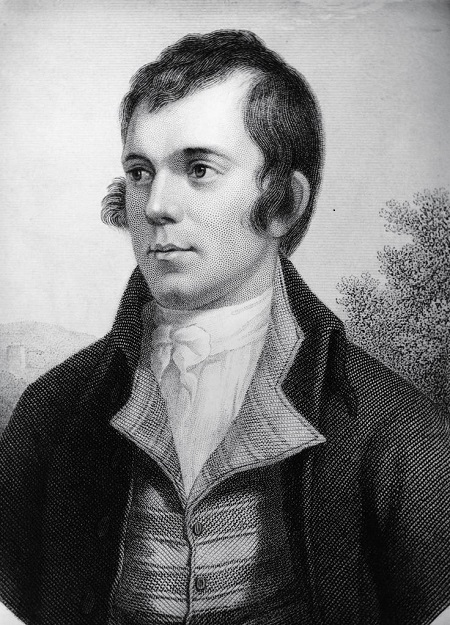Mary Morison è un canto d’amore scritto da Robert Burns probabilmente per Mary Morison di Mauchline (1771-1791)
Sull’anno della composizione ci sono delle perplessità alcuni datano la poesia al 1780 altri al 1784/85. Su una lapide nel cimitero(1) della chiesa di Mauchline è stato scritto “In memoria dell’attendente John Morrison e di sua figlia, la bella Mary Morrison del poeta”.
Così la differenza di pochi anni sulla datazione della poesia diventa però significativa per la Mary sepolta a Mauchline che è morta nel 1791 all’età di 20 anni: nel primo caso la bella aveva 9 anni e nel secondo 4 (2).
Alcuni studiosi ritengono che il vero nome della bella potrebbe essere Alison (o Ellison) Begbie.
Per altri potrebbe essere Mary Campbell, ovvero la bella Highland Mary amata dal poeta.
Mary Morison is a love song written by Robert Burns to Mary Morison of Mauchline (1771-1791)
For the year of the composition there are some perplexities: some date the poetry to 1780 others to 1784/85. On a gravestone(1) in the church cemetery of Mauchline it was written “In Memory of Adjutant John Morrison and also his daughter, the poet’s bonnie Mary Morrison“.
But the difference of a few years on the dating of the poem becomes however significant for the Mary buried in Mauchline who died in 1791 at the age of 20: in the first case the beauty was 9 years old and in the second case 14 (2). Some scholars believe that the real name of the beauty could be Alison (or Ellison) Begbie.
Other authors however believe that she was Mary Campbell, the Highland Mary beloved by the poet.

Nel 1783 Robert Burns iniziò a comporre poesie in uno stile tradizionale usando il dialetto dell’Ayrshire nelle Lowland scozzesi. Nel 1784 suo padre morì e i Burns si trasferirono a Mossgiel Farm nel paese di Mauchline (East Ayrshire) dove Rabbie rimase fino al 1786. (3)
A Mossgiel Farm Burns comporrà la maggior parte delle poesie pubblicate ne “The Kilmarnock Edition“. Qui frequenterà molte fanciulle (e diverrà molte volte padre), qui conoscerà Jean Armour, che sposerà dopo molte peripezie, qui si farà molti amici e altrettanti nemici.
Mary Morison
In questa poesia Burns esprime il concetto che l’amore rende ricco anche l’uomo più misero, ma l’amata non contraccambia e lo lascia solo tra le dame, così il poeta le chiede di avere almeno pietà di lui. Tutta la poesia può essere letta come una forma di corteggiamento per vincere la ritrosia di una fanciulla nel concedere l’amore.
In this poem Burns expresses the concept that love makes even the most miserable man rich, but his beloved does not reciprocate and leaves him alone among the ladies, so the poet asks her to have at least pity on him. All poetry can be read as a form of courtship to overcome a girl’s reluctance to grant love.
Quattro Melodie per un testo
Le melodie tradizionalmente abbinate al testo sono quattro: nell’edizione del 1788 di “Scots Musical Museum” Robert Burns indica “Duncan Davidson” uno strathspey , mentre l’editore Thomson lo pubblicò con “Bide ye yet“; in “Select Collection of Scottish Airs” del 1793 la melodia è diventata “The Glasgow Lasses“; ma l’ultimo abbinamento risalente all’Ottocento è stata la melodia “The Miller“
The melodies traditionally associated with the text are four: in the 1788 edition of “Scots Musical Museum” the melody is “Duncan Davidson” a strathspey while Thomson published it with “Bide ye yet” ; in “Select Collection of Scottish Airs” of 1793 the melody became “The Glasgow Lasses”; but the last one dating back to the nineteenth century was the melody “The Miller”

I
O Mary, at thy window be,
It is the wish’d, the trysted hour!
Those smiles and glances let me see,
That make the miser’s treasure poor:
How blythely was I bidethe stour,
A weary slave frae sun to sun,
Could I the rich reward secure,
The lovely Mary Morison.
II
Yestreen, when to the trembling string
The dance gaed thro’ the lighted ha’,
To thee my fancy took its wing,
I sat, but neither heard nor saw:
Tho’ this was fair, and that was braw,
And yon the toast of a’ the town
I sigh’d, and said among them a’,
“Ye are na Mary Morison.”
III
Oh, Mary, canst thou wreck his peace,
Wha for thy sake wad gladly die?
Or canst thou break that heart of his,
Whase only faut is loving thee?
If love for love thou wilt na gie,
At least be pity to me shown;
A thought ungentle canna be
The thought o’ Mary Morison
Traduzione italiana (da qui)
I
O Maria, affacciati alla finestra:
è l’ora desiderata, è l’ora stabilita!
Fa ch’io veda quei sorrisi e quegli sguardi
che rendono povero il tesoro dell’avaro:
come felicemente sopporterei la polvere,
costretto a faticare da un giorno all’altro,
se potessi assicurarmi questa ricca ricompensa:
l’amabile Maria Morison.
II
Ieri sera, quando alla tremolante corda
le danze attraversavano la sala illuminata,
a te è volato il mio pensiero:
lì io sedevo, ma non sentivo niente, niente vedevo.
Sebbene una fosse graziosa, un’altra bella
e l’altra la più bella di tutto il paese,
io sospiravo e dicevo in mezzo a loro:
«Voi non siete Maria Morison».
III
O Maria, puoi tu distruggere la pace
di chi morirebbe volentieri per te?
Puoi tu spezzare quel cuore,
la cui sola colpa è quella d’amarti?
Se non vuoi rendere amore per amore,
almeno mostrami un po’ di pietà!
Non può essere un pensiero scortese
il pensiero di Maria Morison.
(1) https://commons.wikimedia.org/wiki/File:Mary_Morison%27s_Grave,_Mauchline.JPG
(2) http://www.robertburns.org/encyclopedia/CampbellHighlandMary176315186.180.shtml
(3) https://www.burnsmemorialhomes.com/burns
http://www.robertburns.plus.com/marymorison.htm
http://www.electricscotland.com/poetry/henderson/singalong/page103.htm
http://www.robertburnsfederation.com/poems/translations/mary_morison.htm
https://www.scottish-country-dancing-dictionary.com/dance-crib/mary-morison.html
